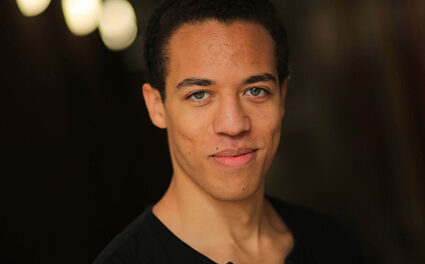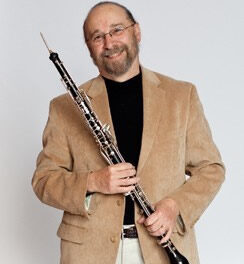High on the list of the Triangle’s treasures is the Sarah P. Duke Gardens on the Duke University campus. The university’s Music in the Garden series, presented by Duke Performances, takes place in various parts of this pastoral wonder. This penultimate concert featured the Mallarmé Chamber Players, in various configurations, in the fine and intimate acoustics of Kirby Horton Hall. I attended the founding concert of the Mallarmé Chamber Players in 1984. From its beginning, the musically open and diverse spirit of the 19th century Parisian salon was a centerpiece. With its exposed, rustic wooden beams, high ceiling, plush couches, and floor to ceiling windows opening on the gardens, this hall embodies that spirit.
The Mallarmé Chamber Players deployed four players to perform two very different duets and a quartet from the French repertoire. The Sonata for Two Violins in G, Op.3, No. 1, by Jean-Marie Leclair (1697-1764), known as the Elder. Mallarmé Artistic Director Suzanne Rousso gave brief and intriguing information about the composer and about the ensemble’s performance.
Leclair is considered a founder of the French School of violin playing. Perhaps a potential TV series — CSI Baroque, maybe — lurks in the composer’s violent ending. After his second marriage, Leclair bought a house in a bad neighborhood of Paris where he was found dead in 1764. (His body was only found after two months!) He had been stabbed in the back and his body was found with his prized 1721 Stradivari clutched in his hands. A dark stain marks its surface to this day.
Rousso, who played the second part, drew attention to the fact she was using her viola, not a violin. She said she had had to take only a few sections down an octave. Jeremy Preston, a member of the second violin section of the North Carolina Symphony, took the leading part. All three movements are marked “allegro,” but the middle movement, with an appended “ma poco,” serves as a slow movement. The piece explores contrasting textures and the use of a viola enhanced that because of its darker tone and less brilliant sound in its highest range. The intonation, phrasing, and care for dynamics of both players were uniformly fine.
Cellist Nathan Leyland was joined by pianist and retired UNC Chapel Hill musicologist Thomas Warburton for the wonderful Sonata for Cello and Piano, L.135, by Claude Debussy (1862-1918). The composer had planned to compose six sonatas for various instruments but finished only three before his death. Debussy was fascinated by the Harlequin character, Pierrot, and first entitled this work “Pierrot fâché avec la lune” (“Pierrot angry with the moon”). A melancholy but noble air pervades the opening Prologue. The following movement, marked “Serenade,” calls for every technical arrow from the cellist’s quiver, from strumming pizzicatos to high whistling harmonics, leading without break into the soaring high spirits of the finale. Leyland produced a deep, robust cello tone, and his intonation was precise. His articulation was excellent, and his palette of tonal color was refined. Warburton’s execution of the keyboard part mirrored these qualities. The piano appeared to be a parlor grand; since its lid was kept fully down throughout the concert, it never had a chance to swamp the strings.
The Piano Quartet No. 1 in C minor, Op. 15, by Gabriel Fauré (1845-1924), brought the concert to a passionate conclusion. Warburton preceded the performance with remarks and played brief excerpts to draw attention to Fauré’s use of Dorian and Lydian modes. The pianist was joined by violinist Preston, violist Rousso, and cellist Leyland. Most performances of the opening unison statement I have heard have seemed badly balanced. Perhaps Warburton’s unopened piano helped make this performance’s opening bars sound better balanced. The players captured the gossamer delicacy of the scherzo perfectly. Rousso’s and Leyland’s dark and extra-rich string tone helped add emotional weight to the melancholy adagio. Rhythmic vigor and seamless singing lines were virtues of the ensemble’s playing of the brilliant finale.
For the final concert of this series, the ensemble will take the form of string duets and a piano trio. The director of Duke Performances said the concert is sold out BUT 25 tickets will be available at the door at 6:00 p.m. August 11. For details, see our calendar.













